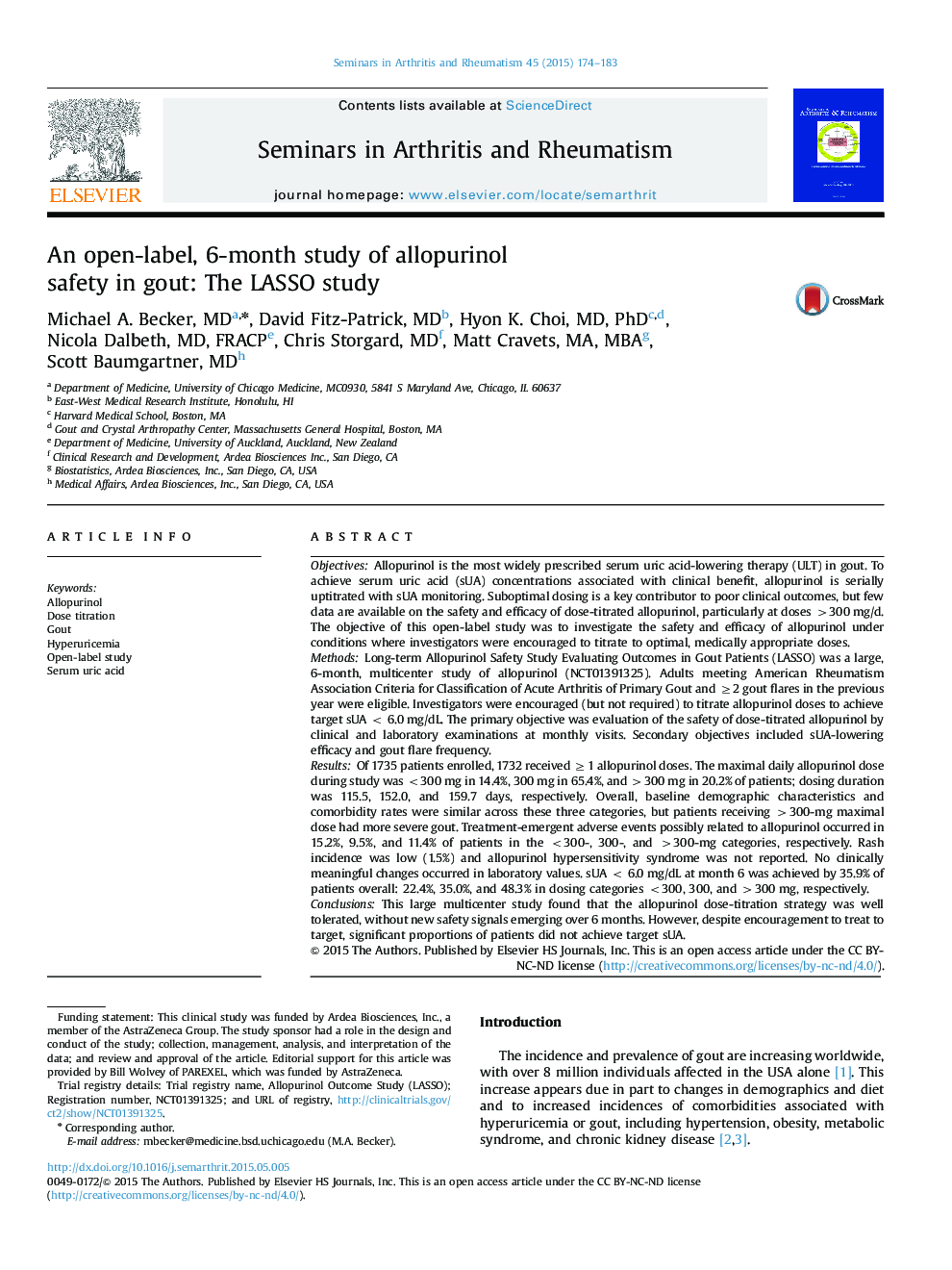| کد مقاله | کد نشریه | سال انتشار | مقاله انگلیسی | نسخه تمام متن |
|---|---|---|---|---|
| 5887513 | 1151731 | 2015 | 10 صفحه PDF | دانلود رایگان |

ObjectivesAllopurinol is the most widely prescribed serum uric acid-lowering therapy (ULT) in gout. To achieve serum uric acid (sUA) concentrations associated with clinical benefit, allopurinol is serially uptitrated with sUA monitoring. Suboptimal dosing is a key contributor to poor clinical outcomes, but few data are available on the safety and efficacy of dose-titrated allopurinol, particularly at doses >300 mg/d. The objective of this open-label study was to investigate the safety and efficacy of allopurinol under conditions where investigators were encouraged to titrate to optimal, medically appropriate doses.MethodsLong-term Allopurinol Safety Study Evaluating Outcomes in Gout Patients (LASSO) was a large, 6-month, multicenter study of allopurinol (NCT01391325). Adults meeting American Rheumatism Association Criteria for Classification of Acute Arthritis of Primary Gout and â¥2 gout flares in the previous year were eligible. Investigators were encouraged (but not required) to titrate allopurinol doses to achieve target sUA < 6.0 mg/dL. The primary objective was evaluation of the safety of dose-titrated allopurinol by clinical and laboratory examinations at monthly visits. Secondary objectives included sUA-lowering efficacy and gout flare frequency.ResultsOf 1735 patients enrolled, 1732 received â¥1 allopurinol doses. The maximal daily allopurinol dose during study was <300 mg in 14.4%, 300 mg in 65.4%, and >300 mg in 20.2% of patients; dosing duration was 115.5, 152.0, and 159.7 days, respectively. Overall, baseline demographic characteristics and comorbidity rates were similar across these three categories, but patients receiving >300-mg maximal dose had more severe gout. Treatment-emergent adverse events possibly related to allopurinol occurred in 15.2%, 9.5%, and 11.4% of patients in the <300-, 300-, and >300-mg categories, respectively. Rash incidence was low (1.5%) and allopurinol hypersensitivity syndrome was not reported. No clinically meaningful changes occurred in laboratory values. sUA < 6.0 mg/dL at month 6 was achieved by 35.9% of patients overall: 22.4%, 35.0%, and 48.3% in dosing categories <300, 300, and >300 mg, respectively.ConclusionsThis large multicenter study found that the allopurinol dose-titration strategy was well tolerated, without new safety signals emerging over 6 months. However, despite encouragement to treat to target, significant proportions of patients did not achieve target sUA.
Journal: Seminars in Arthritis and Rheumatism - Volume 45, Issue 2, October 2015, Pages 174-183